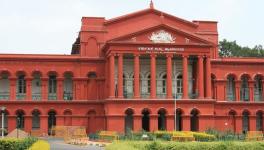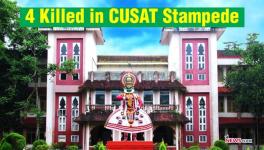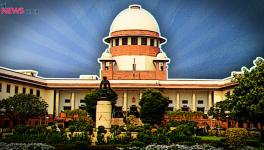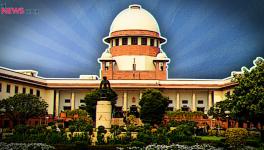2G Verdict: One Issue Many Judgements
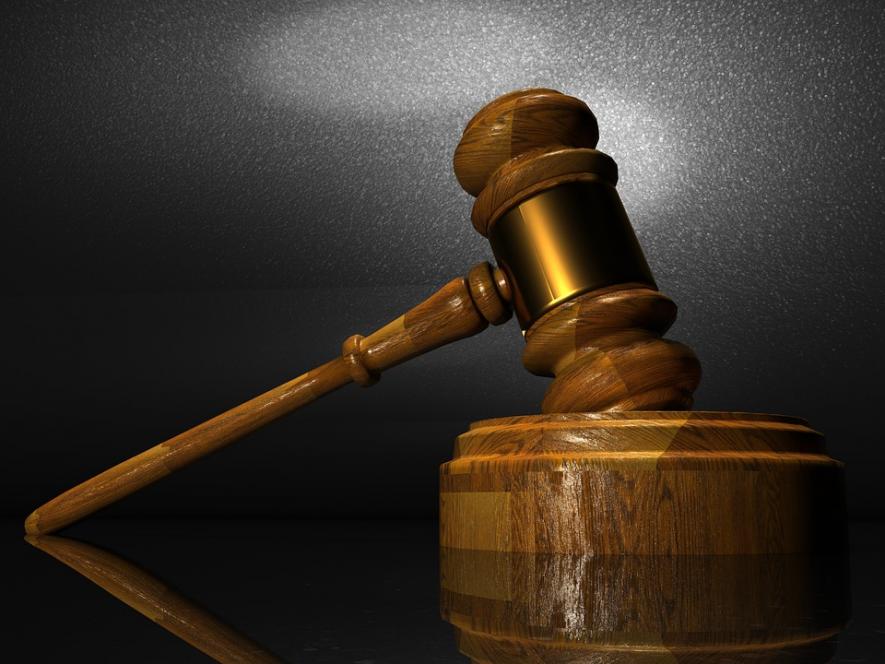
It is an accepted position in law that the threshold for determining wrong doing in civil cases is different from the requirement for criminal cases. In civil cases the threshold is the ‘preponderance of possibility’ while in criminal cases the threshold is ‘beyond reasonable doubt’. In simple terms a civil case is determined based on the likelihood of an alleged event taking place, whereas in criminal cases there should be no doubt that an alleged event did take place. It is on this basis that a civil case and a criminal case filed for the same act may result in a pronouncement of guilt in the civil case and an acquittal in the criminal case. In 2009 a Judgement for a Civil Writ Petition filed in the Delhi High Court had vitiated the opaque nature of the of the licensing and spectrum allocation process in the 2G case. The 2012 Judgement of the Hon’ble Supreme Court of India cancelled 122 licenses that had been awarded through a process, which violated Article 14 of the Constitution of India. The 2017 Judgement of the CBI Court however denied that there was any wrongdoing in the spectrum allocation process. In all three of these cases the main line of defence on the part of the Government officials was that due to the large number of applicants, the process had to be modified.
The 2009 Judgement of the Delhi High Court was in respect of S. Tel Ltd. V Union of India. The petitioners were a telecom company who challenged the licencing and spectrum allocation process after they had lost out by the change in the process and cut-off date by the Minister of Communications and Information Technology, A. Raja. The first press release declared the cut-off date as October 1, 2007. The petitioners had complied with this and submitted their application by September 28, 2007. It was the subsequent change to September 25, 2007 which was challenged as arbitrary by the petitioners. In this case the respondents took the defence that the change of cut-off date was due to the large number of applications received. The respondents had also failed to adhere to the no-cap policy of TRAI. The High Court in this case observed and ordered:
“Taking into consideration that on 13.4.2007 the Government of India had recommended TRAI to furnish its recommendation in terms of 11 (e) of the TRAI Act, 1997 on the issue as to whether a limit should be put on the number of access service providers in each service area. The TRAI having given its recommendations on 28.8.2007 which were duly accepted by the Government, the respondent cannot be allowed to arbitrarily change the cut-off date and that too without any justifiable reasons. The respondents having failed to satisfy the Court as to how any public interest would be affected in the matter, the impugned press release dated 10.1.2008 is quashed. The respondents are directed to consider the applications submitted by the petitioner on 28.9.2007 for 16 circles.”
The 2012 Judgement of the Supreme Court dealt again with the process for licencing and spectrum allocation, but did not touch upon questions of criminality in the process. The petition raised questions on whether the licencing and spectrum allocation process violated the Constitution and whether it was against public interest; whether the allocation of spectrum (which is the valuable commodity) at 2001 prices was contrary to the decision of the Council of Ministers; and whether the licences granted to ineligible applicants are liable to be quashed.
Once again, the defence taken was that due to the large number of application that had been received after announcing the cut-off date, the cut-off date was changed to an earlier date after the applications had been received by the first cut-off date announced. This was done contrary to the decision of the Council of Ministers which was to accept the TRAI recommendations in their entirety. The respondents also challenged the CAG report as “seriously flawed” and “based on totally unfounded assumptions”.
The Supreme Court in determining the questions on natural resources and the process through which they could be licenced to private players held that the “State is the legal owner of the natural resources as a trustee of the people and although it is empowered to distribute the same, the process of distribution must be guided by the constitutional principles including the doctrine of equality and larger public good.”
Regarding the issues arising out of the no-cap policy and the first-come first-served policy recommended by TRAI, the Supreme Court observed;
“[T]he entire approach adopted by TRAI was lopsided and contrary to the decision taken by the Council of Ministers and its recommendations became a handle for the then Minister of C&IT and the officers of the DoT who virtually gifted away the important national asset at throw away prices by willfully ignoring the concerns raised from various quarters including the Prime Minister, Ministry of Finance and also some of its own officers. This becomes clear from the fact that soon after obtaining the licences, some of the beneficiaries off-loaded their stakes to others, in the name of transfer of equity or infusion of fresh capital by foreign companies, and thereby made huge profits. We have no doubt that if the method of auction had been adopted for grant of licence which could be the only rational transparent method for distribution of national wealth, the nation would have been enriched by many thousand crores.”
Commenting on the allocation of spectrum at 2001 prices, the Supreme Court observed,
“We may also mention that even though in its recommendations dated 28.8.2007, TRAI had not specifically recommended that entry fee be fixed at 2001 rates, but paragraph 2.73 and other related paragraphs of its recommendations state that it has decided not to recommend the standard option for pricing of spectrum in 2G bands keeping in view the level playing field for the new entrants. It is impossible to approve the decision taken by the DoT to act upon those recommendations. We also consider it necessary to observe that in today’s dynamism and unprecedented growth of telecom sector, the entry fee determined in 2001 ought to have been treated by the TRAI as wholly unrealistic for grant of licence along with start up spectrum. In our view, the recommendations made by TRAI in this regard were contrary to the decision of the Council of Ministers that the DoT shall discuss the issue of spectrum pricing with the Ministry of Finance along with the issue of incentive for efficient use of spectrum as well as disincentive for sub-optimal usages. Being an expert body, it was incumbent upon the TRAI to make suitable recommendations even for the 2G bands especially in light of the deficiencies of the present system which it had itself pointed out. We do not find merit in the reasoning of TRAI that the consideration of maintaining a level playing field prevented a realistic reassessment of the entry fee.”
In other words, the Supreme Court completely dismissed the policy of first-come first-served, as well as pricing the spectrum and licences at 2001 rates.
Reiterating its stand on the first-come first-served policy, the Supreme Court held;
“In matters involving award of contracts or grant of licence or permission to use public property, the invocation of first-come-first-served policy has inherently dangerous implications. Any person who has access to the power corridor at the highest or the lowest level may be able to obtain information from the Government files or the files of the agency/instrumentality of the State that a particular public property or asset is likely to be disposed of or a contract is likely to be awarded or a licence or permission is likely to be given, he would immediately make an application and would become entitled to stand first in the queue at the cost of all others who may have a better claim.”
The Supreme Court observed further that;
“When it comes to alienation of scarce natural resources like spectrum etc., it is the burden of the State to ensure that a non-discriminatory method is adopted for distribution and alienation, which would necessarily result in protection of national/public interest. … while transferring or alienating the natural resources, the State is duty bound to adopt the method of auction by giving wide publicity so that all eligible persons can participate in the process.”
The Supreme Court accepted the chain of events between 2007 and 2008 wherein A. Raja after his appointment as Minister of Communications and Information Technology directed that all the applications received for grant of UAS Licence should be kept pending till the receipt of TRAI recommendations. After the recommendations of TRAI were received, they were not placed before the full Telecom Commission. This was because the notice of the meeting was not given to any of the non-permanent members despite the fact that the recommendations made by TRAI for allocation of spectrum in 2G bands had serious financial implications. After licences had been issued, 3 applicants transferred their equities for a total sum of Rs.24,493 crores in favour of foreign companies. Therefore, it was necessary for the DoT to take the opinion of the Finance Ministry as per the existing Rules. The DoT had to discuss the issue of spectrum pricing with the Ministry of Finance after theCouncil of Ministers approved of the recommendations made by the Group of Ministers in 2003. However, the Minister of Communications and Information Technology knew that the Finance Secretaryhad objected to the allocation of 2G spectrum at the rates fixed in 2001. Therefore, he did not consult the Finance Minister or the officers of the Finance Ministry
The Minister of Communication and Information Technology ignored the suggestion of the Minister of Law and Justice for placing the matter before the Empowered Group of Ministers. The Prime Minister’s suggestion that keeping in view the “inadequacy of spectrum, transparency and fairness should be maintained in the matter of allocation” was rejected by the Minister of Communication and Information Technology stating that it will be “unfair, discriminatory,arbitrary and capricious to auction the spectrum to new applicants because it will not give them level playing field”.
A. Raja had set the cut-off date as September 25, 2007 despite a press release one day earlier set the date as October 1, 2007. Thisaction benefitted some real estate companies who did not have any experience in dealing with telecom services and whose applications had been submitted one day before the new cut-off date of September 25. The new cut-off date and the change of first-come first-served policy was not made public till January 10, 2008. Some of the applicants, who had access either to the Minister or the officers of the DoT, were able to have all the compliance requirements of the LoIs prepared in advance which enabled them to be first in line for grant of licences and allocation of spectrum. On January 9, 2008 the meeting of the full Telecom Commission was scheduled to consider issues relating to grant of licences and pricing of spectrum. This meeting was which was deliberately postponed on so that the concerned Departmental Secretaries would be unable to raise objections against the procedure devised by the DoT for grant of licence and allocation of spectrum.
The outcome of the Supreme Court’s 2012 Judgement was the cancellation of 122 licences that had been granted through the opaque process created to benefit a few companies to the detriment of other applicants as well as existing licence holders. The Court declared the process violative of the principle of equality contained in Article 14 of the Constitution. This in effect is a tacit acceptance that a process existed.
The CBI case against A. Raja and others in this regard becomes more surprising given that the Supreme Court had accepted the chain of events as placed before it. The CBI v A. Raja and Ors. decision denies that these events even form a sequential chain. The CBI charge sheet had outlined the investigation as; investigation about cut-off date, investigation into violations of first-come first-served policy, dual technology and spectrum allocation, and eligibility of companies. In the supplementary charge sheet filed, the CBI investigated the flow of 200 crores that was paid to Kalaignar TV through various companies, and its return to DB Realty through those same companies.
The first charge sheetlevelled chargesagainst;
A. Raja Indian werecheating, forgery for the purpose of cheating, using as genuine a forged document or electronic record under the Indian Penal Code.Charges of criminal misconduct were also brought against him under the Prevention of Corruption Act. Siddhartha Behura who was Secretary of the Department of Telecom andR. K.Chandolia who was the Personal Secretary to A. Rajawere charged with cheating, as well as criminal misconduct.Shahid Usman Balwa and Vinod Goenka the Directors of Swan Telecom Pvt. Ltd. As well as the company were charged with cheating, forgery for the purpose of cheating, and using as genuine a forged document or an electronic record under the Indian Penal Code.Sanjay Chandra the Managing Director of Unitech Ltd. and the companywere charged with cheating under the Indian Penal Code.
Gautam Doshi the Group Managing Director of Reliance ADA Group, Hari Nair the Senior Vice President of Reliance ADA Group and Surendra Pipara the Senior Vice President of Reliance ADA Group, as well as Reliance Telecom Ltd. were charged with, public servant concealing design to commit offence which it is his duty to prevent, and cheating, under the Indian Penal Code.
The supplementary charge sheet expanded the number of accused in relation to the transfer of 200 crores;
Asif Balwaa Director of Kusegaon Fruits and Vegetables Pvt. Ltd. was charged with cheating and criminal conspiracy under the Indian Penal Code, as well as public person taking gratification other than legal remuneration in respect of an official act, public servant obtaining valuable thing, without consideration from person concerned in proceeding or business transacted by such public servant, and their abetment under the Prevention of Corruption Act.
Rajiv B. Agarwal another Director of Kusegaon Fruits and Vegetables Pvt. Ltd., Karim Morani the Director of Cineyug Media and Entertainment Pvt. Ltd., Sharad Kumar the Director of Kalaignar TV Pvt. Ltd., and KanimozhiKarunanithi a promoter for Kalaignar TV Pvt. Ltd. were charged with criminal conspiracy under the Indian Penal Code, as well as public person taking gratification other than legal remuneration in respect of an official act, public servant obtaining valuable thing, without consideration from person concerned in proceeding or business transacted by such public servant, and their abetment under the Prevention of Corruption Act.
Given the aspects of the case that had been investigated, the main case of the prosecution was that the accused had conspired together to obtain the spectrum allocation cheaply this can also be inferred from the basic charges levelled against the accused.
In his Judgement the CBI Judge rejected the prosecution case in its entirety. The same series of events that the Supreme Court had accepted before cancelling 122 licences in 2012 was dismissed by the CBI Judge. The Supreme Court had held that the policy of first-come first-served was not transparent, and its subsequent change to ‘first to comply’ was arbitrary. The Special Court however did not consider the lack of transparency and the arbitrariness of the changed policy. Instead, the Special Court sought to establish that the lack of coordination among the bureaucrats in the concerned departments had led to a situation where there could be no definite policy or process, hence there was no real change of policy.At the same time the Court accepted A. Raja’s and R. K. Chandolia’s defence that changing the cut-off dates was due to the large number of applications they had received, an argument the Supreme Court had rejected.
The CBI Court had found that there was no question about the ineligibility of companies through a strict interpretation of Clause 8 of the UASL Guidelines of 2005 that,
“No single company/legal person, either directly or through its associates, shall have substantial equity holding in more than one LICENSEE Company in the same service area for the Access Services namely: Basic, Cellular and Unified Access Service. “Substantial equity” herein will mean ‘an equity of 10% or more’. A promoter company/Legal person cannot have stakes in more than one LICENSEE Company for the same service area. A certificate to this effect shall be provided by the applicant’s Company Secretary along with application”
While for the present case it should be clear that the standard applicable ought to be ‘substantial control’ rather than the strict application of ‘substantial equity’. However, subordinate Courts are not empowered to extend definitions.On the other hand, the CBI Court could have ‘lifted the corporate veil’, an action perfectly within its power. The Court instead determined that since the departmental officials were not certain about the definitions, the definitions should be interpreted strictly.
Lifting the corporate veil was the basis on which the Supreme Court had been able to ascertain the collusion of A. Raja and other officials with company directors in the allocation of spectrum and the licencing process. The Supreme Court viewed the entire chain in its entirety. The CBI Court however, instead of viewing the entire chain, compartmentalized it, and accepted the defence explanation for each unit.
The change of application dates after applications had been received was explained as being due to an excess of applicants. The change of first-come first-served to first to comply was explained as being an internal policy decision. That applicants were being controlled by companies that already had significant investments in the same licence service areas was dismissed by interpreting Clause 8 strictly and refusing to lift the corporate veil. The selling of shares in licensee companies and the transfer of 200 crores was explained as being the normal course of business transactions.In the CBI case lifting the corporate veil would not only have exposed which companies were pulling the strings through strategic acquisitions, but also on the flow of the 200 crores from DB Realty to Kalaignar TV and back.
Get the latest reports & analysis with people's perspective on Protests, movements & deep analytical videos, discussions of the current affairs in your Telegram app. Subscribe to NewsClick's Telegram channel & get Real-Time updates on stories, as they get published on our website.









